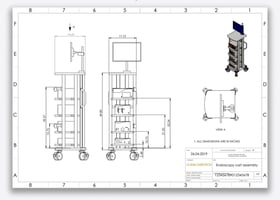Ready to make your products truly configurable with Tacton Works? You've landed in the perfect...
Tips for Successful Implementation and Common Pitfalls to Avoid
"Personalization is the new perfection." This mantra echoes throughout the corridors of modern manufacturing businesses, sweeping away the dust of the one-size-fits-all approach.
Product configurators have emerged as the champions of this paradigm shift, reshaping the way products are designed, priced, and quoted. However, realizing the full potential of these powerful tools calls for strategic implementation and vigilant management. Are you ready to step up to the challenge?
Becoming a maestro at the product configurator game doesn't happen overnight. It's a journey riddled with potential pitfalls and steep learning curves. Nevertheless, the rewards are worth every step. Here are some tried-and-tested strategies to set you on the right path towards a successful product configurator implementation:
-
Understand your customers: The most powerful product configurator is of little use if it does not resonate with your target customers. Dive into customer data, segment it and understand their unique needs, preferences, and behaviors. This will help you choose the right type of configurator – rule-based or constraint-based – and tailor it to meet customer expectations.
-
Align with business objectives: Define what success looks like for your business and align your product configurator implementation with those goals. Whether it's boosting sales, improving customer satisfaction, or reducing operational costs, a clear direction will guide your decisions and gauge your progress.
-
Invest in training: A product configurator can seem complex and intimidating to users unfamiliar with it. Investing in thorough training programs will ensure that your team and customers can navigate and utilize the configurator efficiently.
However, even with these strategies in place, it's easy to stumble into common pitfalls that can derail your implementation. Here are a few to watch out for:
-
Over-complication: Simplicity is key when it comes to product configurators. Avoid overwhelming your customers with too many choices or complex configurations. Remember, the goal is to facilitate their decision-making process, not complicate it.
-
Lack of integration: A product configurator should seamlessly integrate with other tools in your CPQ process. Failure to do so can result in disjointed customer experiences and operational inefficiencies.
-
Neglecting maintenance: Like any tool, product configurators need regular upkeep. Stay proactive with updates, address bugs promptly, and continuously optimize the tool based on user feedback and performance data.
Mastering the art of product configurator implementation can propel your manufacturing business into a new era of customer-centricity and efficiency. With the right approach, you can turn the daunting challenge of personalization into a competitive advantage that sets your business apart. After all, in the world of manufacturing, personalization is the new perfection.
Stay tuned for our next blog series where we'll explore more hot topics in the realm of manufacturing technology. Until then, happy configuring!




